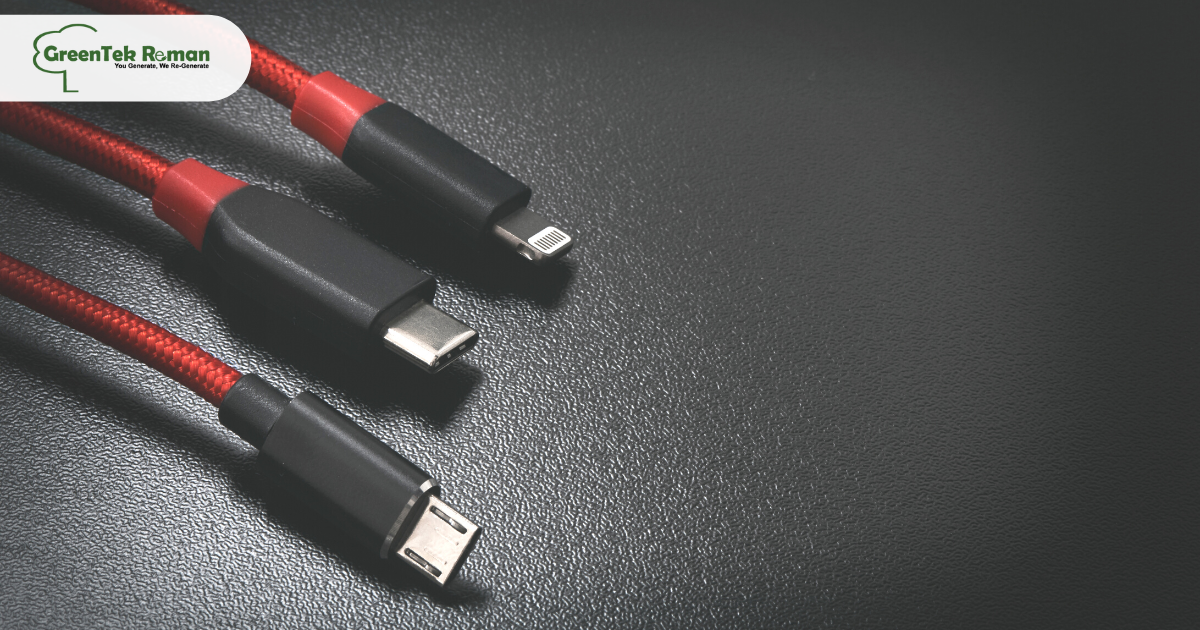European Union makes USB-C port obligatory for phones: The Bigger E-waste Picture
European Union officials have settled on the new regulations requiring a uniform charging port for smartphones and different devices. EU officials stated they had inked a provisional settlement on a ‘USB-C port as a single charging solution’ for the products sold in the 27-country bloc. “Today, we’ve made the common charger a reality in Europe!” the European Parliament’s rapporteur Alex Agius Saliba in a press statement. “European clients have been frustrated with multiple chargers piling up with each new device. Now they’ll be capable of using a single charger for all their portable electronics,” added Saliba. (Source: European Parliament) Here’s all about the new regulations.
The Green Angle: Saving the environment and money with USB-C port?
The EU’s pitch is simple – customers will save cash they’d have otherwise spent to shop for new chargers and may store an extra 11,000 tonnes of e-waste yearly in the shape of disposed and unused chargers.
“It will lessen e-waste using leaps and bounds in the long term. When you improve to a better phone, you commonly throw away the old charger as it will become redundant,” Aksh Chauhan, COO of Cashify (an online resale platform for gadgets), said. The EU used statistics to support its argument. “These new responsibilities will result in extra reuse of chargers and could assist customers to save up to €250 million a year on unnecessary charger purchases,” they said. (Source: Hindustan Times)
Their statistics show that, on average, customers own three mobile chargers, which are used on an everyday basis (the likelihood will increase if they have an Android phone and an iPhone).
Then there’s the e-waste problem. A study by the EU indicates that around 11,000 tonnes of e-waste (and that number is developing as a whole lot of customers are switching to newer and faster chargers) is generated just in the EU in the form of mobile device chargers. While this measure to standardize USB-C will assist lessen e-waste and is potentially a step closer to fixing the problem, it will most effectively have a limited impact – reducing just the charger-generated waste.
Is it better information and choice for consumers?
Consumers will be provided with clear information on the charging characteristics of new devices, making it easier to see whether their existing chargers are compatible. Buyers can also choose whether they want to purchase new electronic equipment with or without a charging device. These new obligations will lead to more reuse of chargers and will help consumers save up to €250 million a year on unnecessary charger purchases. Disposed and unused chargers represent about 11,000 tonnes of e-waste annually.
Is the law final?
No, the law still needs to be approved by the EU Parliament and Council later this year. However, this should be an easy passage.
Why the EU wants one charger for everyone?
As in line with the EU, the revision is a part of a broader attempt to address product sustainability, mainly electronics in the EU market, and lessen digital waste. The purpose is to keep away from a brand-new fragmentation in the market, continue to reduce environmental waste, ensure consumer convenience, and keep away from the so-called “lock-in” effects created by proprietary charging solutions. EU, in addition, says that the policies will inspire technological innovation, “As wi-fi charging generation becomes more prevalent, the European Commission might be empowered to develop so-called delegated acts, at the interoperability of charging solutions.”
When will the new regulations come into impact?
The new regulations will take impact by fall 2024
Are the new regulations only for smartphones?
No. Other than cellular phones, the brand-new EU regulations practice tablets, headphones and headsets, earbuds, virtual cameras, e-readers, handheld videogame consoles, and portable speakers, rechargeable via a stressed cable. Regardless of the manufacturer, all those gadgets must be geared up with a USB Type-C port.
Does this new rule include any exemptions?
Exemptions could apply only for gadgets that might be too small to have a USB Type-C port, including clever watches, health trackers, and a few sports activities equipment. Laptops will also be included in the rule at a later date. Laptops can adapt to the requirements 40 months after their entry into force.
What else do the policies cover apart from a single charger?
The new guidelines also require clear labeling on new gadgets about charging options and whether a product includes a charger. This would, the EU says, will assist avoid confusion and ease buying decisions for consumers who regularly own numerous gadgets and do not continually need extra chargers. The charging velocity is also harmonized for devices that support rapid charging, allowing customers to charge their gadgets simultaneously with any compatible charger. While it is hoped that this law will help control the e-waste problem in the long run, whether it holds true can only be proven in time.


